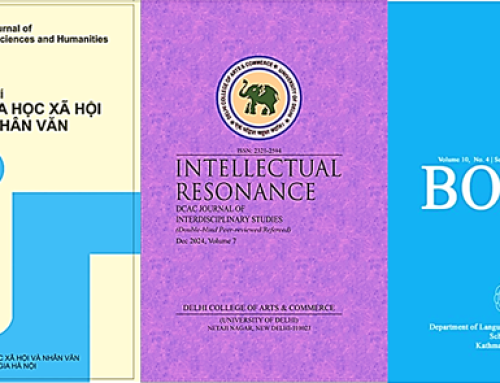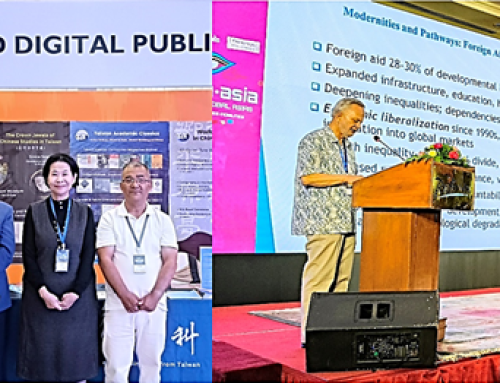NPM Journals Archive now includes the NPM Video Library and NPM Antiques Lexicon, alongside 150,000 image extracts, broadening its appeal to scholars and the general public. With 18,474 illustrated entries and 517 videos, these additions vividly bring the museum’s artifacts to life. The image extracts, equipped with “search by image,” “AI colorization,” and “return to article page” features, enrich the database’s context and foster imaginative exploration. This enhancement, alongside UDP’s precise text search technology, establishes the database as a critical resource for libraries, museums, and researchers in humanities and arts, offering 80% more content than the museum’s official site. It includes comprehensive collections from 4 key journals– NPM Monthly of Chinese Art, NPM Research Quarterly, NPM Quarterly, NPM Bulletin, since 1966, making it a pivotal platform for exploring Chinese cultural heritage and a global resource for aesthetic education and the creative economy.
Sinica Sinoweb (中研院經典人文學刊,1928-present)
Celebrated as one of the “Twin Crown Jewels of Taiwanese Sinology” alongside the journals of the National Palace Museum, Sinica Sinoweb stands as the only full-text searchable sinological database from Taiwan. It encompasses core journals from Academia Sinica as well as other renowned Taiwanese journals recognized globally. The collection boasts a comprehensive archive from the first issue to the most recent, with a particular emphasis on preserving early and rare editions. Notably, about 30% of its content is globally unique, exclusive for full-text searches. Esteemed sinologists internationally have lauded Sinica Sinoweb for its impeccable digitization, especially for rare and intricate characters found in publications like the Bulletin of the Institute of History and Philology and Chinese Studies of the National Central Library.
Lionart Digital Archive (雄獅美術知識庫,1971~1996)
Rich with the essence of Chinese culture, calligraphy stands as the heart of Chinese art. This database houses 4,268 noteworthy classical calligraphy and inscriptions, amounting to 1.7 million characters in diverse styles. It seamlessly blends individual character images with complete works, all enhanced with a full-text search capability. A standout feature is its robust search efficiency for ancient characters, making it invaluable for philology research, education, appreciation, and daily practice. The collection is split into two sub-databases: Full Work Database, in which users can promptly find different calligraphers’ works from different dynasties, compare their styles, and enjoy the glamorous Chinese characters via search. Single Character Database, in which every character reserves its original look, charm and feeling. It’s convenient for users to apply these characters to their own works, such as: name card, signboard, advertisement design, while blending Chinese art into their daily lives.
Taiwan Wenxian Congkan (臺灣文獻 叢刊,Tang Dynasty-Qing Dynasty)
One of the most frequently used works by scholars of Taiwan studies and commonly called the “Encyclopedia of Taiwan,” the Taiwan Wenxian Congkan (ed. Hsien-Wen Chou) was originally published by the Bank of Taiwan. Taiwan Wenxian Congkan is comprised of 309 books and incorporates local histories and official documents of the Ming and Qing dynasties, including the short-lived Southern Ming. Includes poems, works from private collections (some of which are only remaining copy), and out-of-print books. Also covers topics from the Tang Dynasty to the Japanese occupation period in documents gathered from local and overseas libraries. From the Taiwanese perspective, Taiwan Wenxian Congkan records a variety of dimensions of Taiwan, including the historical development of individual districts, the evolution of cities, deeds of individual people, local customs and culture. It is indeed the largest collection on the history of Taiwan in the Chinese language. United Digital Publications Company Ltd. is pleased to exclusively offer the only full text and full-image version of Taiwan Wenxian Congkan as e-content.
Taiwan Wenxian Congkan Continuation(臺灣文獻叢刊續編, Ming Dynasty-1958)
The database updates one of the most important resources in Taiwan studies. Coverage in the original Taiwan Wenxian Congkan was limited to the 1958-1972 period, and subsequently new historical records were uncovered. Accordingly, UDP has compiled the Taiwan Wenxian Congkan Continuation database, which includes additional books, archives and literature gathered since the original edition was released by the Bank of Taiwan. One half of these materials consist of books and the only extant copies of manuscripts and handwritings emanating from prestigious universities in China. The other half of the records originated from research institutions and publishers in Taiwan. Content included in the earlier publication is excluded, except in cases where a newer edition adds value. The Taiwan Wenxian Congkan Continuation database is full text and full-image, with textual criticism, original sources and author introductions in 204 books covering chorography, geographic accounts, local customs, poems, literature, political archives, official documents, civil affairs, war records, records of coastal defenses, the actions of Japanese pirates, the ‘228 Incident,’ the face-off between Zheng Cheng-Gong and the Manchu court, and historical records of the Southern Ming Dynasty.









